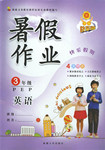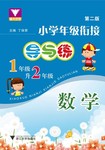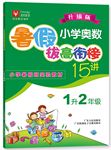
阅读理解。
We have known for some time that college students coming from Japan and Taiwan to study in the
United States do better than their American peers(同龄人)in maths and science. These general
impressions of Asian superiority(优势)in mathematics and science were proved by studies were made
in the late 1960s and early 1970s.
In these studies, the average score of American kindergarteners was below those from Japan. In first
grade the difference increased, and by fifth grade it was very large.Moreover, 60 fifth grade classes in
Japan, Taiwan, and the United States were compared in mathematics. The average score of the highest
scoring American classroom was below that of all the Japanese classrooms and all but one of the Chinese classrooms.
Why is this so? Are the Asian students born smarter? A series of studies in 1986 and 1987 raised
these questions, and their findings seem to point the American and Asian school systems have certain
features in common. But the differences are striking. Test scores on nationwide examinations determine
entry into high school and college in both Japan and Taiwan, but not in the United States. Career paths
too are more closely linked to educational achievements in Japan and Taiwan. As a result, far more
pressure is given to even very young children to study hard and succeed in school in both Japan and
Taiwan than those in the United States.
These are also striking differences in classroom instruction. By fifth grade,for example,t he U. S.
children were observed to spend an average of only 19.6 hours per week in academic activities in
comparison with the Taiwanese and Japanese children of 40.4 and 32.6 hours per week, respectively.
What is more,the U. S.children spent less of their academic time on mathematics. By fifth grade ,the
U. S.classrooms averaged 3.4 hours per week on maths compared to 11.4 hours in Taiwan and 7.6
hours in Japan.
1. The primary purpose of this passage is to ________.
A. show Asian superiority in maths and science to the American students
B. compare the American educational practices with those of Asians
C. warn the American government of the educational problems
D. criticize the American educational system
2. Asian students in the U. S.do better in maths and science than their American peers because________.
A. Americans are less interested in maths and science than Asians
B. Asian students are cleverer than the American children
C. Asian students spend more time in academic activities
D. All of the above
3. Which of the following is NOT one of the differences between the American and the Asian school
systems? ________
A. Entrance into high school does not depend on test scores on national exams in the U. S..
B. Academic achievements are more closely related to jobhunting in Asian countries.
C. Children start kindergarten earlier in Asian countries than in the United States.
D. Asian students pay more attention to classroom activities than Americans.
 学练快车道快乐假期暑假作业新疆人民出版社系列答案
学练快车道快乐假期暑假作业新疆人民出版社系列答案 浙大优学小学年级衔接导与练浙江大学出版社系列答案
浙大优学小学年级衔接导与练浙江大学出版社系列答案 小学暑假作业东南大学出版社系列答案
小学暑假作业东南大学出版社系列答案 津桥教育暑假拔高衔接广东人民出版社系列答案
津桥教育暑假拔高衔接广东人民出版社系列答案 波波熊暑假作业江西人民出版社系列答案
波波熊暑假作业江西人民出版社系列答案科目:高中英语 来源:福建省厦门一中2012届高三上学期期中英语试题 题型:050
| |||||||||||||||||||||||||||||||||||||||||||||||||||||||||||
查看答案和解析>>
科目:高中英语 来源:江苏期末题 题型:阅读理解
 e things before we realize that. So what will bring
e things before we realize that. So what will bring 
查看答案和解析>>
科目:高中英语 来源:同步题 题型:阅读理解
查看答案和解析>>
科目:高中英语 来源:安徽省期中题 题型:阅读理解
查看答案和解析>>
科目:高中英语 来源:天津高考真题 题型:阅读理解
查看答案和解析>>
湖北省互联网违法和不良信息举报平台 | 网上有害信息举报专区 | 电信诈骗举报专区 | 涉历史虚无主义有害信息举报专区 | 涉企侵权举报专区
违法和不良信息举报电话:027-86699610 举报邮箱:58377363@163.com